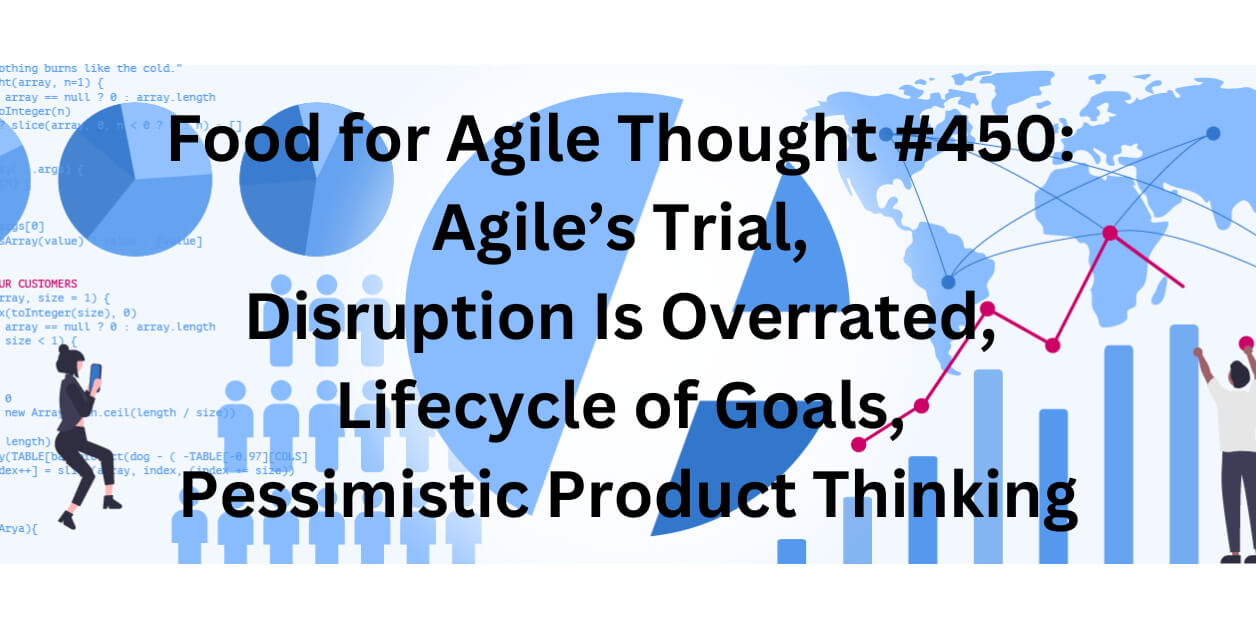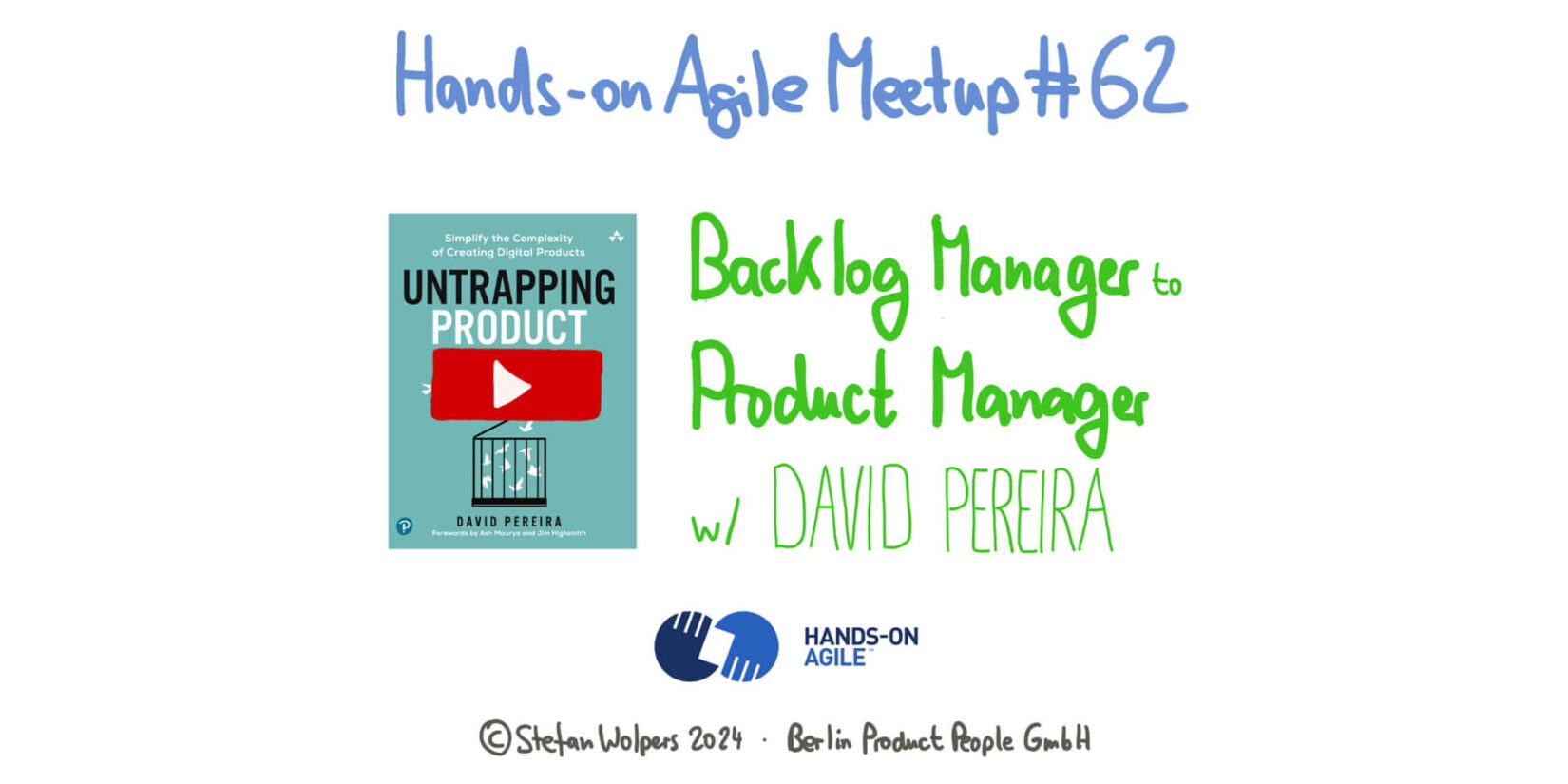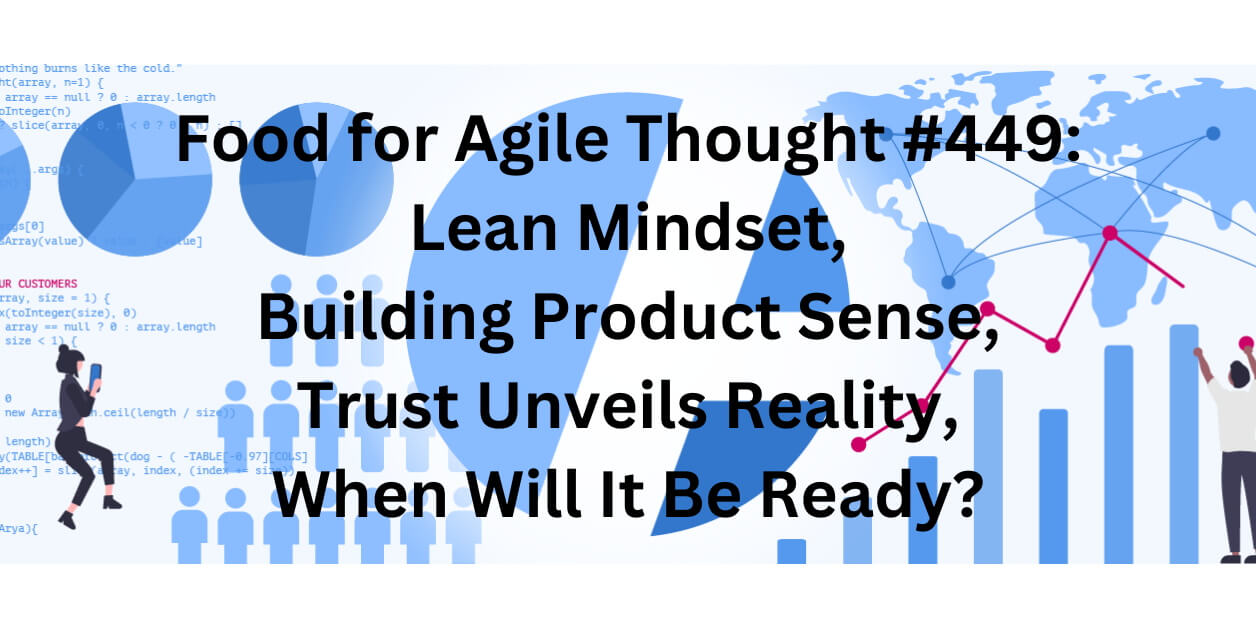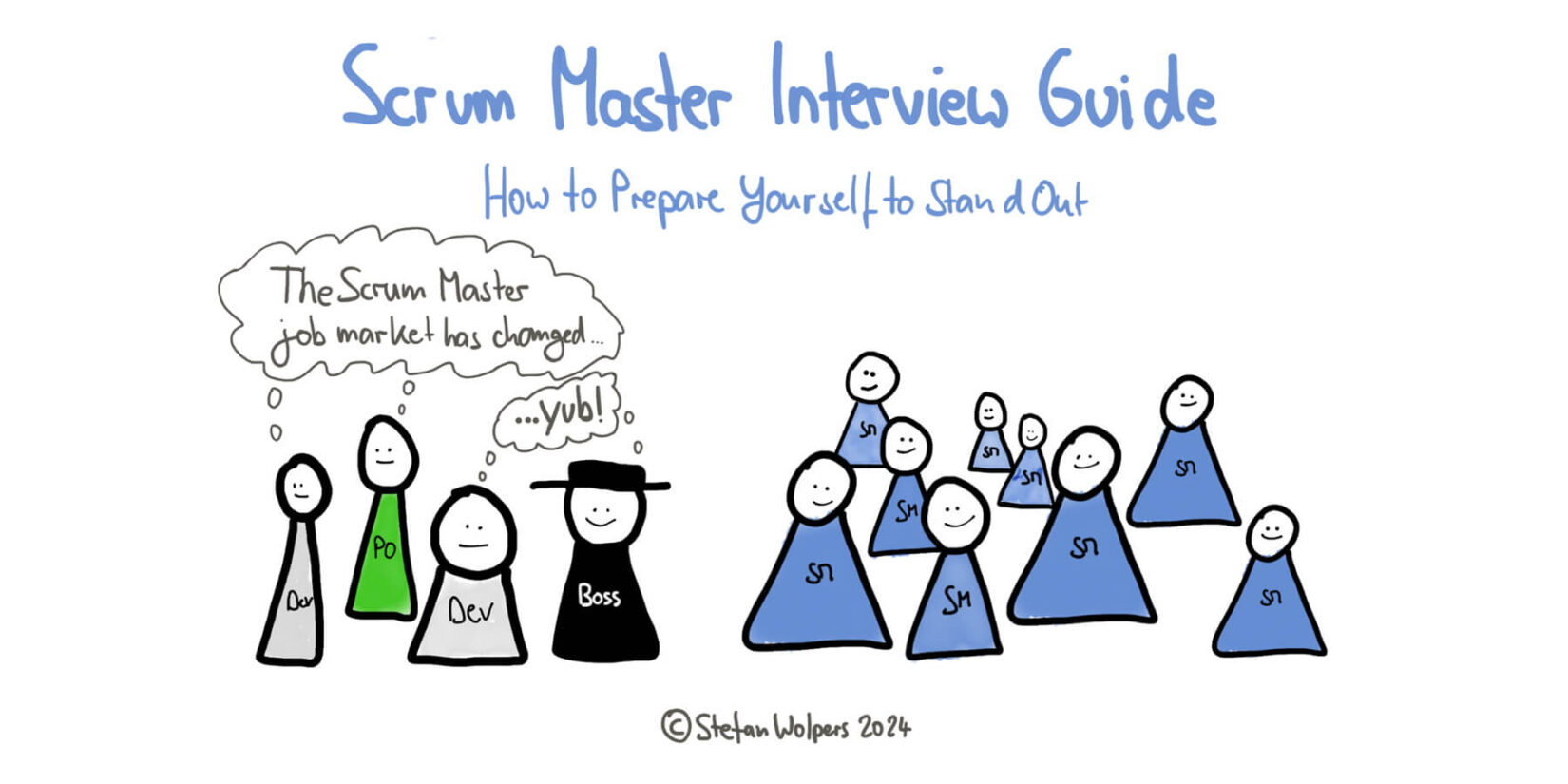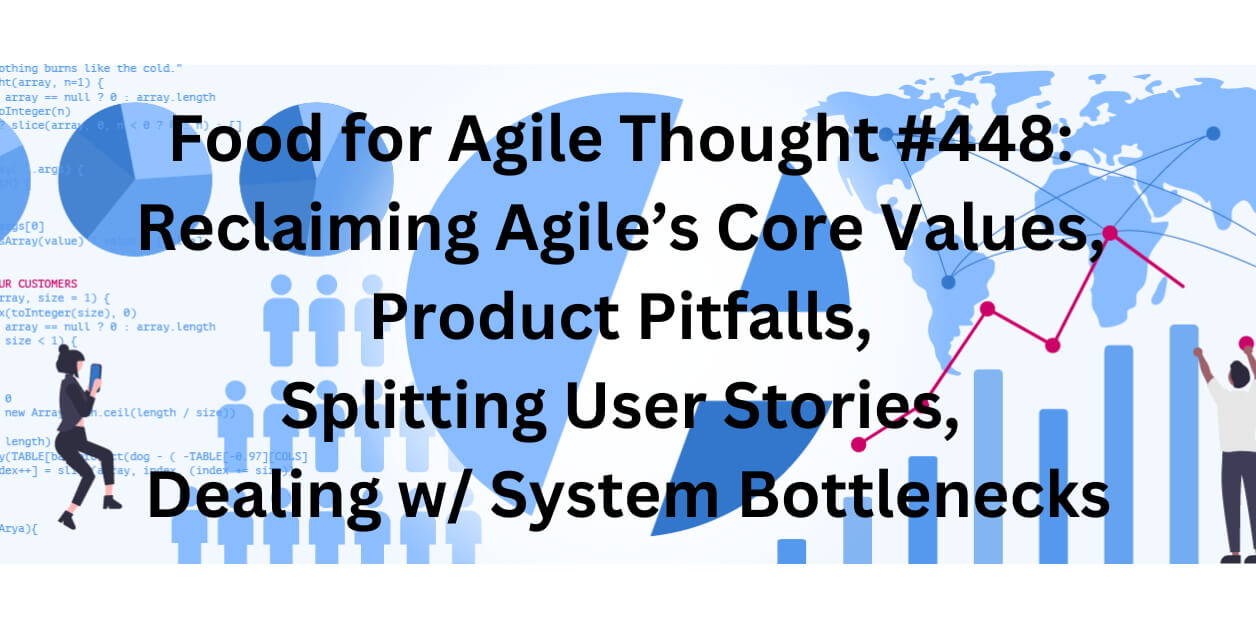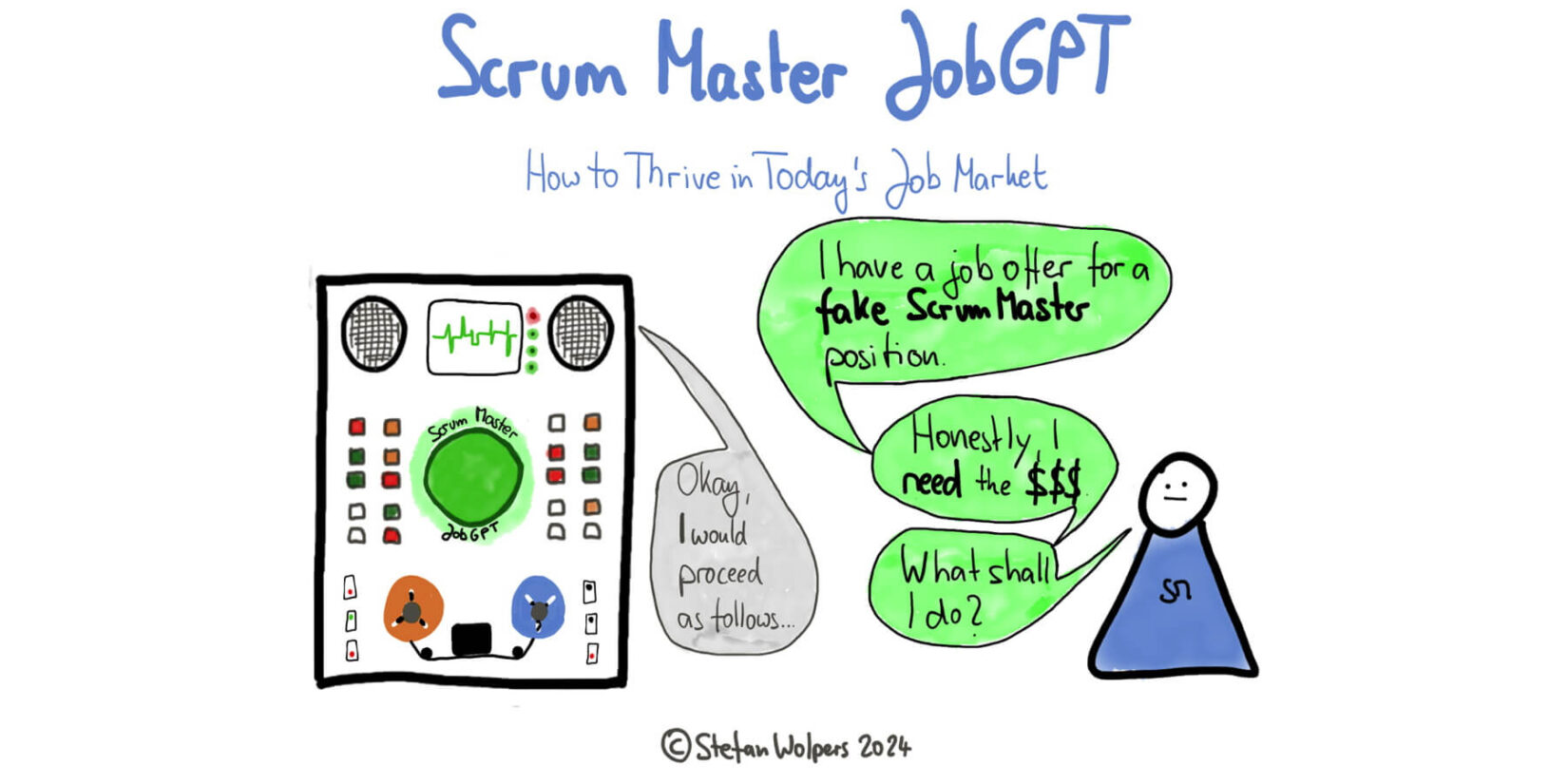TL; DR: Agile’s Trial — Food for Agile Thought #450
Welcome to the 450th edition of the Food for Agile Thought newsletter, shared with 42,573 peers. This week, Sjoerd Nijland imagines Agile’s Trial, highlighting criticisms of Scrum Masters and chaotic environments while defending Agile’s focus on flexibility and continuous improvement. John Cutler reflects on teams losing touch with progress, suggesting tracking key metrics to address challenges, and Tobias Mayer emphasizes Scrum Masters’ roles in organizational transformation, not just team management. Also, Maarten Dalmijn explores SAFe’s popularity over LeSS, attributing its success to its appeal to C-level executives and a non-rebellious narrative comforting traditional businesses, and we gain insights into David Pereira’s approach to turning backlog managers into product managers.
Next, Jason Cohen argues against the obsession with disruption, advocating for useful, desirable products and incremental improvements for sustainable success. April Dunford warns against “overly pessimistic product thinking,” urging teams to leverage product strengths for growth. Meanwhile, Eira Hayward discusses the challenges product managers face in organizations that lack understanding of product management, offering advice from industry leaders on overcoming resistance and implementing effective processes. Moreover, Casey Winters shares insights on scaling and product growth in a podcast, discussing fundamentals, product-market fit, and acquisition strategies from his tech industry experience.
Lastly, Itamar Gilad emphasizes managing the lifecycle of goals through phases of research, discovery, delivery, and monitoring to steer organizations toward outcomes, and Jeff Gothelf breaks down OKRs, stressing the importance of outcome-based key results. Joost Minnaar highlights Mainfreight’s budgetless management model, emphasizing decentralized action, transparency, and culture for success. Dan Pilat and Dr. Sekoul Krastev explain the planning fallacy and suggest strategies like AI, specific goals, and task segmentation to mitigate its effects. Finally, Marc Andreessen shares the journey from co-inventing the web browser to founding Netscape.
